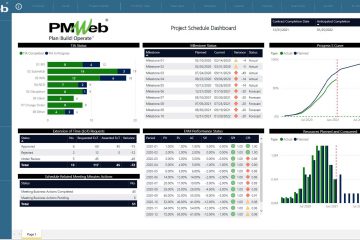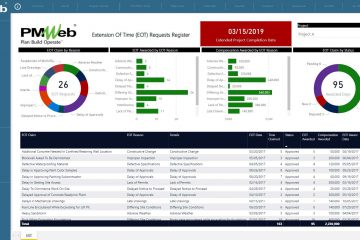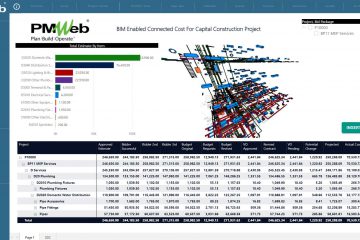The Request for Information (RFI) process is one of the required processes that will exist on every capital construction project regardless of it is type, size, or location. RFIs are issued by the contractor, prime subcontractors, suppliers, or any other entities who have a role in delivering the project’s scope of work.
Most construction documents (agreement, drawings, specifications, and bill of quantities) developed by the engineer, inevitable will not adequately address every single matter. There may be gaps, conflicts, or subtle ambiguities. The objective of the Request for Information (RFI) is to act as the project communication management process to resolve these gaps, conflicts, or subtle ambiguities during the bidding process or early in the construction process to eliminate the need for costly corrective measures. Should the response to the RFI lead to additional work that represents added cost or delays to the project’s original scope of work, then this could lead to a change order request by the contractor.
Similar to all other project management processes, managing the Request for Information (RFI) or Request for Interpretation or Request for Clarification, the process requires having a document template to be used by the project parties to raise the RFI query and then receive the answer for this query. In addition, there should be a documented workflow to enforce the process for submitting, reviewing, and responding to the RFI in accordance with the contract agreement and project execution plan (PEP). The details of all RFI transactions will be then logged in a register to provide the status of submitted, responded, and pending RFIs.
Using a Project Management Information System (PMIS) like PMWeb is crucial to enforce the best practices of transparency, accountability, and real-time single version of the truth reporting to the Request for Information (RFI) process. In addition, Building Information Modelling (BIM) can improve the visualization of the project elements that are associated with submitted RFIs.
This can be achieved by using MS Power BI as the platform for monitoring, evaluating, reporting, and visualizing the performance of the RFI process. The different project BIM models and their associated data will be exported in a format that can be read, used, and visualized in MS Power BI using the “3DBI” visual developed by KG-DEV (https://kg-dev.be/). Associating the BIM model with the RFI process data captured in PMWeb will enable project stakeholders to monitor, evaluate, report, and visualize the RFIs associated with each project building system. Those could be structural, mechanical, electrical and plumbing (MEP) and architectural systems.
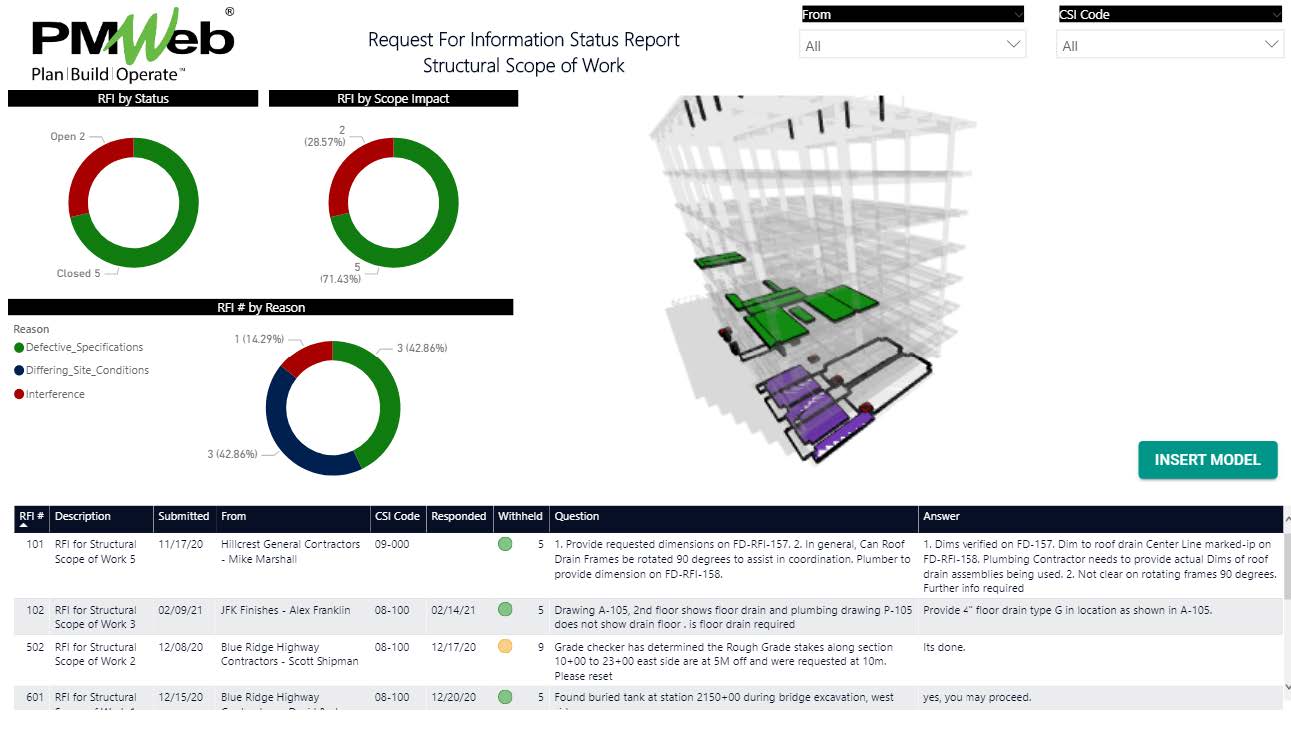
For each BIM model discipline, there will be a separate RFI report. Not only this will make the BIM model less congested but also enable individuals to have access to the RFIs that are specific to the discipline they are responsible for (e.g. structural, MEP, and architectural). Those reports will include a table of all received RFIs along with their details such as subject, from whom it was received, when it was received, the query and the answer, when the response was sent, days withheld among others. The report will also include three donut visuals to summarize the RFIs by status, reason, and whether the response to RFI is out of the project’s scope of work or not.
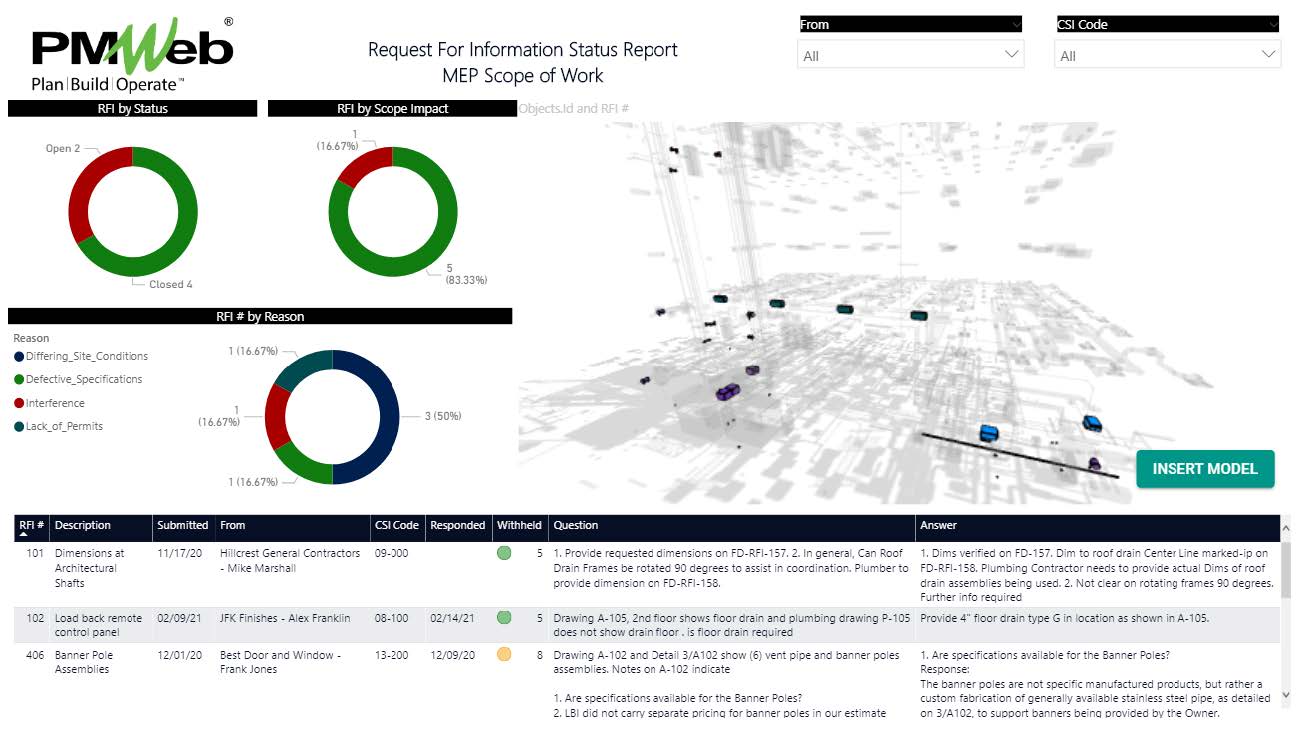
Of course, all RFIs regardless of their discipline will be captured using the PMWeb RFI module. This will enable the project stakeholders to have access to the details of all RFIs. The report will include a log of RFIs showing their description, date received and responded impact on project scope, schedule and cost, time elapsed, and status. In addition, it will include donut visuals to summarize the important information associated with RFIs.
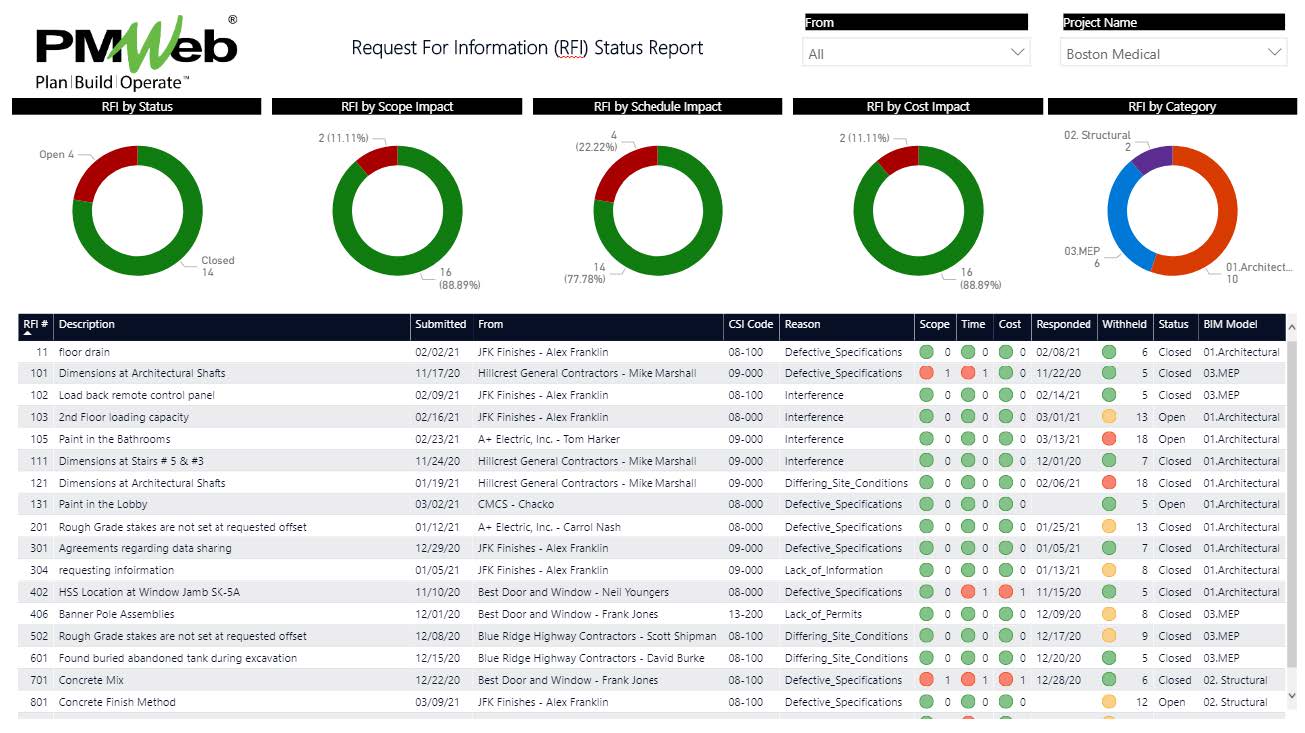
The value of those RFI reports can be only realized if the displayed information is based on real-time, trustworthy, and traceable data. PMWeb default module for Request for Information (RFI) will be used to manage the process. The ready to use form has all needed fields to capture the RFI data including the most common fields of description, category, question, proposed solution, answer, whether the RFI has an impact on project scope, time and/or cost, required as well as actual answer date, priority, specification section among others as well as the data fields that are needed to associate the project schedule WBS level and activity associated with the RFI.
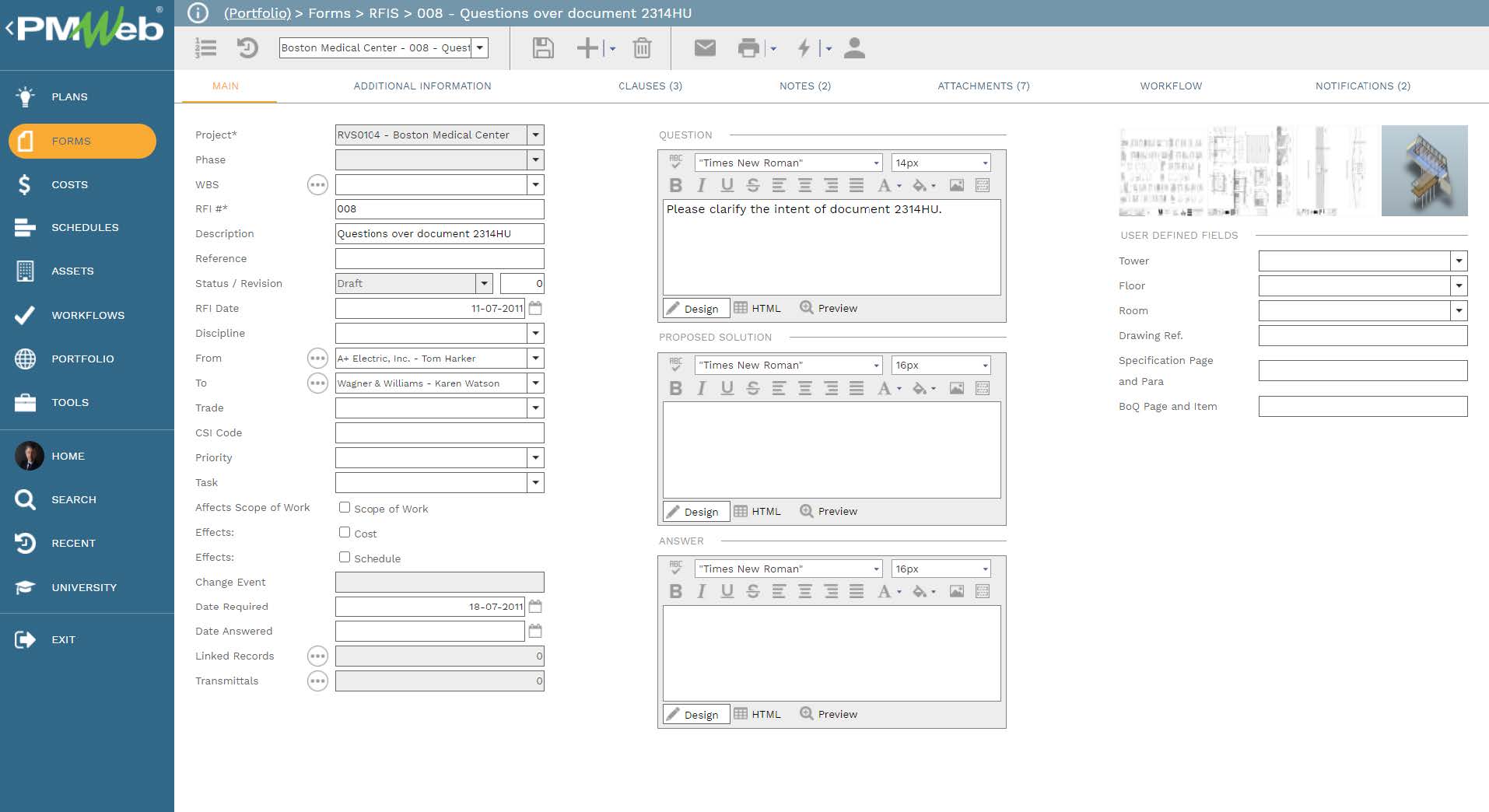
In addition, PMWeb allows adding all-new fields that could be needed to capture more data on each submitted RFI such as Drawing Reference, Specification Page and Paragraph, Bill of Quantity (BoQ) Page, and Item and location of the work associated with RFI. Nevertheless, for associating the RFI with the BIM model, then there is a need to capture the IDs of the BIM model objects associated with the RFI. Since most RFIs could have an impact on more than a single BIM model object, PMWeb allows creating as many fields as needed to capture those IDs.
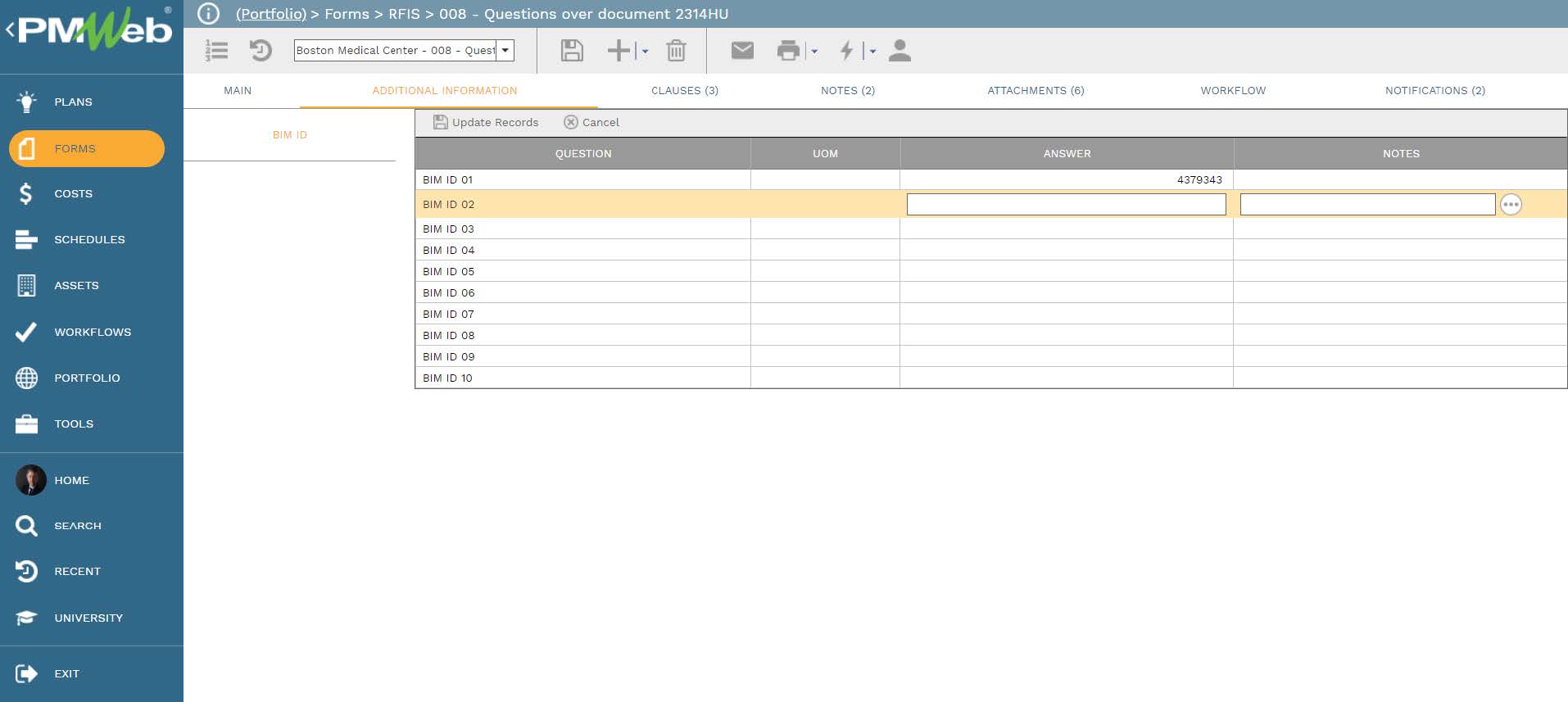
If there is a requirement to also include a picture of those selected BIM object IDs, then the issuer of the RFI needs to use the PMWeb BIM Model manager module to select those IDs on the BIM model and then select the option “Take Snapshot” of the BIM model and attach to the relevant RFI. PMWeb BIM Model Manager allows the PMWeb user to visualize the BIM model and all drawings exported from Autodesk Revit. PMWeb BIM model manager provides the functionality of Autodesk A360 when it comes to reviewing the BIM model.
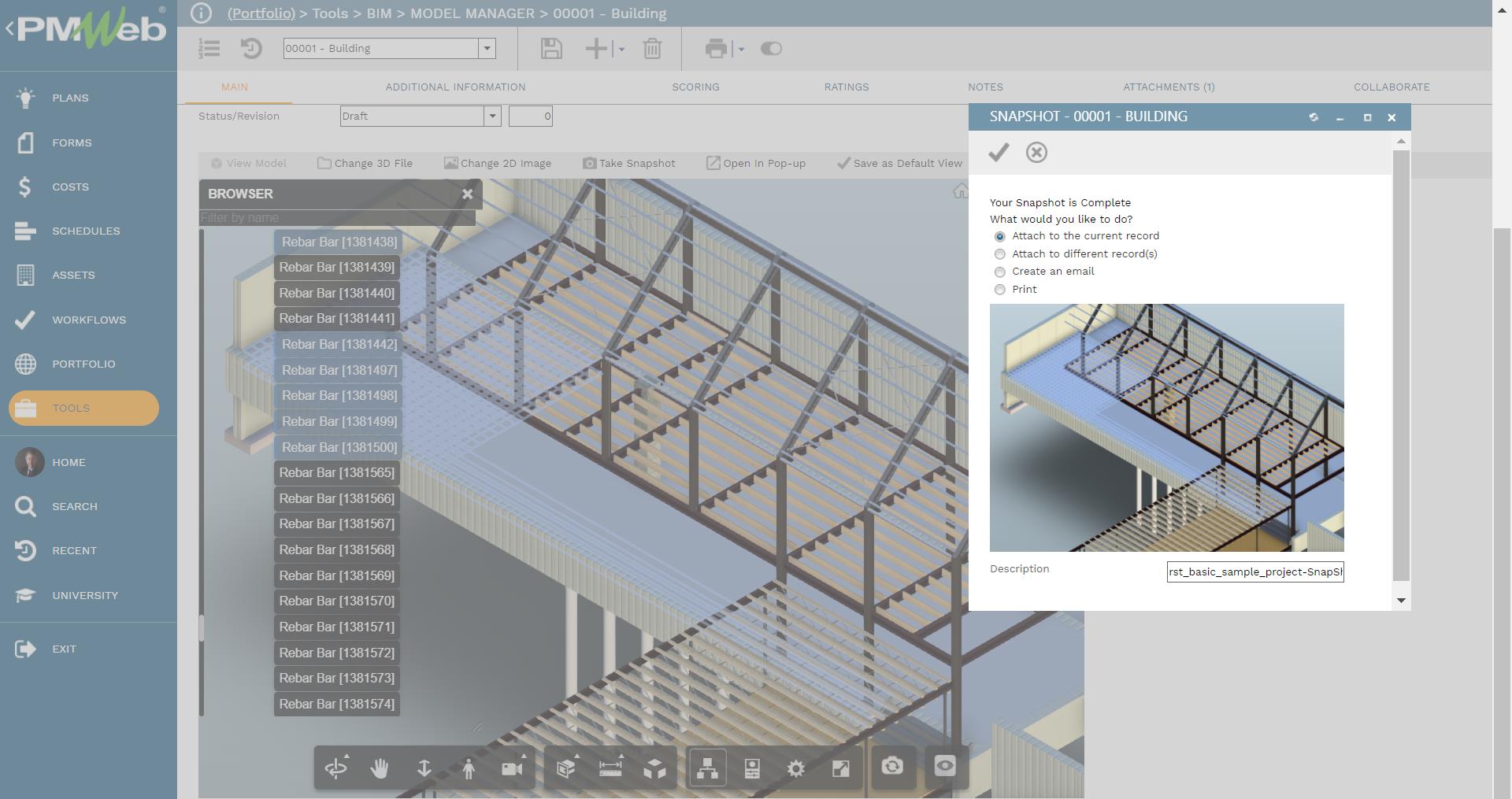
In addition to the BIM model snapshot picture, all supportive documents associated with the RFI such as specification sections, Bill of Quantity pages, drawings, pictures among others need also to be attached to the RFI record. All those documents will be uploaded and stored in the PMWeb document management repository where folders and subfolders will be created to match the required filing system structure adopted by the project management team. In addition, links to all relevant PMWeb records such as submittals, daily reports, work inspection requests among others can be added. Further links to imported MS Outlook emails that are relevant to each RFI will be also added.
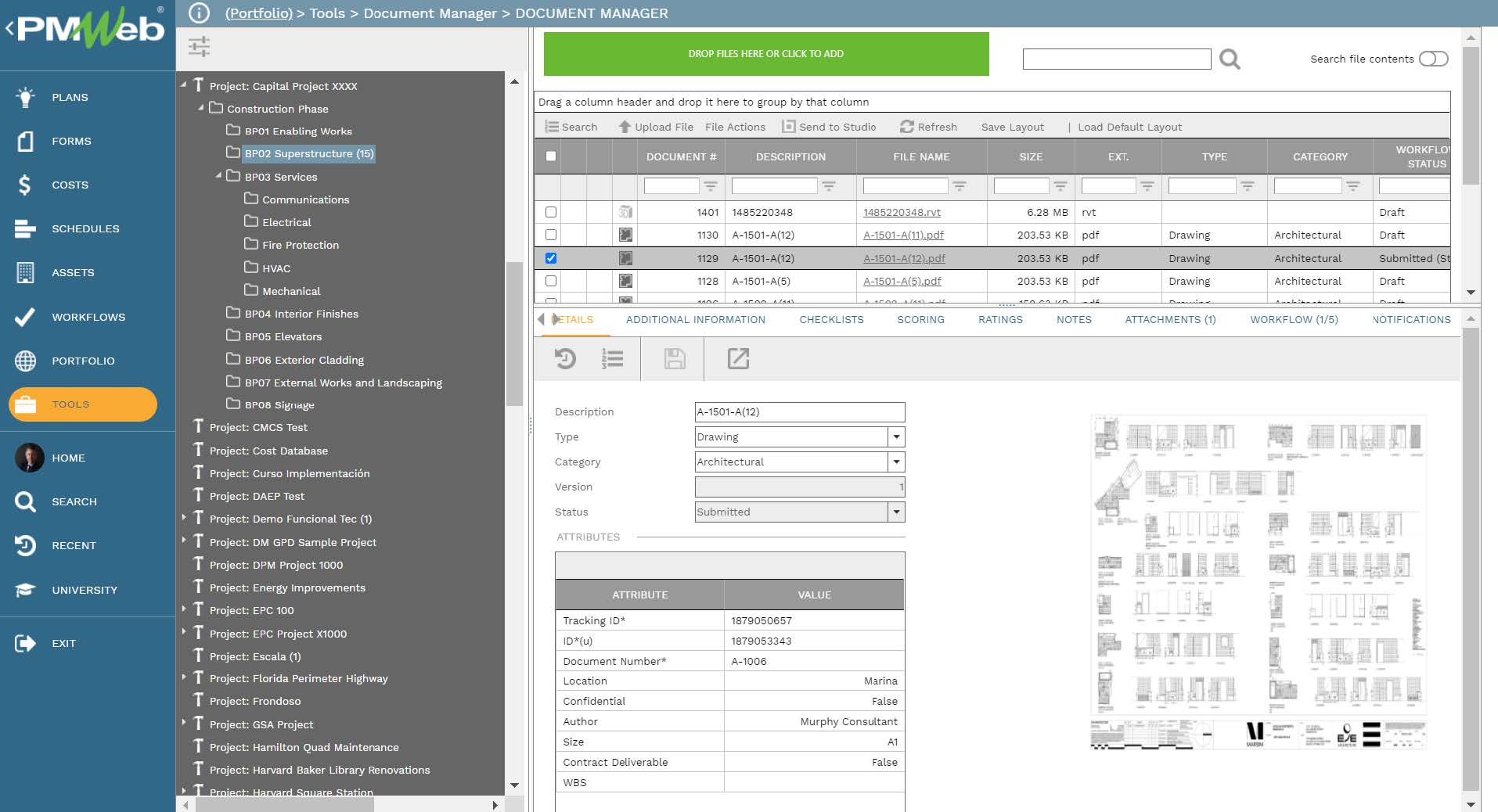
A workflow will be assigned to the RFI form to formalize the process for submitting, reviewing, and approving the RFI transactions. The workflow will identify all needed steps, the duration for each step, responsibility for performing each step, actions that can be taken for each step, and the sequence for performing those steps. The workflow will also include condition rules to channel the RFI review and approval to the discipline selecting the project system category field which could for example structural, MEP, architectural among others.

